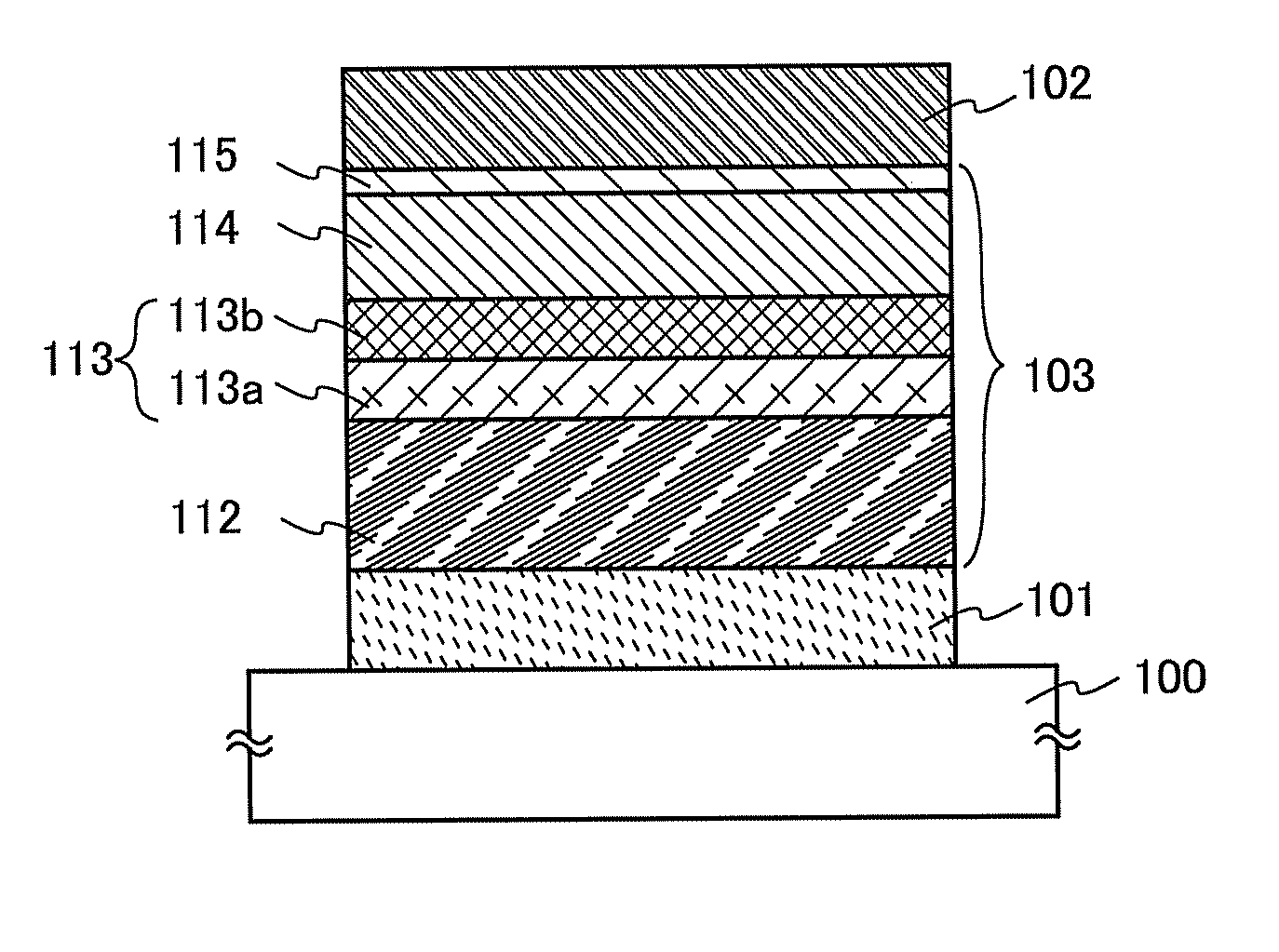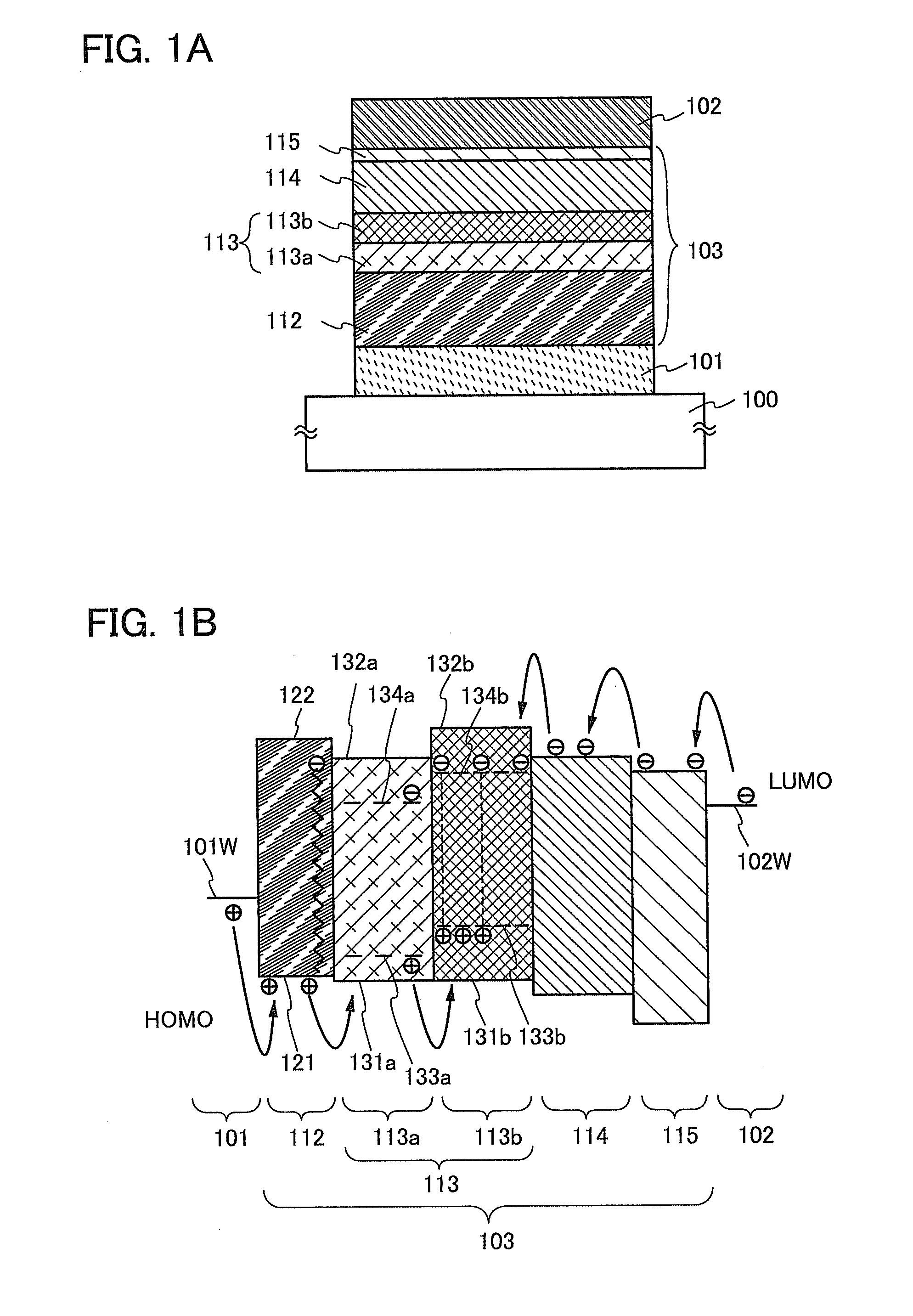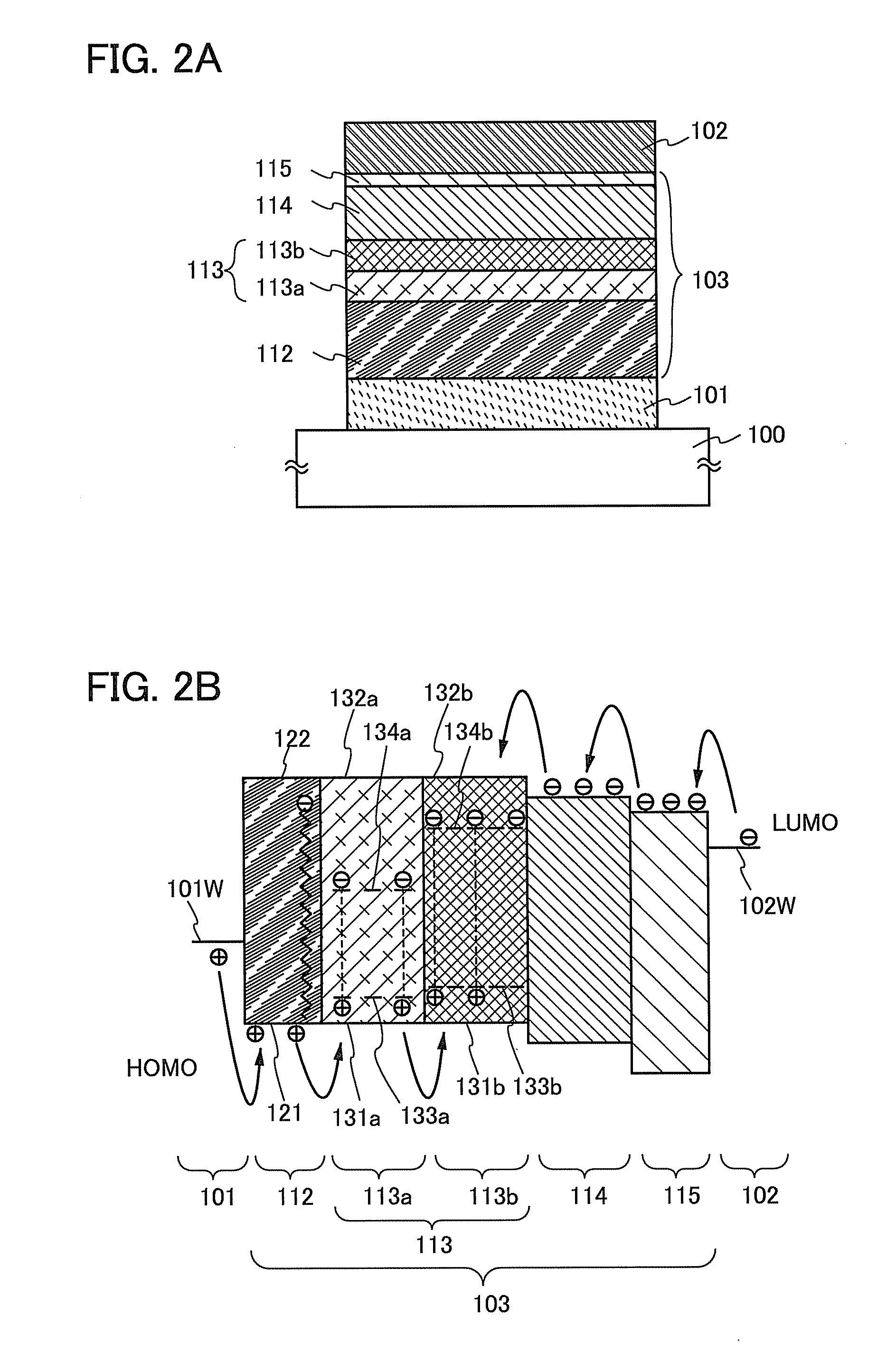Light-Emitting Element, Light-Emitting Device, and Method for Manufacturing the Same
a technology of light-emitting elements and manufacturing methods, which is applied in the direction of thermoelectric devices, organic semiconductor devices, other domestic articles, etc., can solve the problems of reducing the reliability of light-emitting elements, reducing the emission efficiency, and reducing the efficiency of emission, so as to achieve high emission efficiency and reliable effect, the luminance is not easily decreased during operation
- Summary
- Abstract
- Description
- Claims
- Application Information
AI Technical Summary
Benefits of technology
Problems solved by technology
Method used
Image
Examples
embodiment 1
[0065]A light-emitting element which is described in this embodiment includes at least a first light-emitting layer whose one side is in contact with a hole-transport layer and a second light-emitting layer which is in contact with the other side of the first light-emitting layer. Both the first light-emitting layer and the second light-emitting layer contain a bipolar host material and a guest material which is a light-emitting material. The guest material contained in the first light-emitting layer has a lower ability for capturing a hole than the guest material contained in the second light-emitting layer; therefore, the hole-transport property of the first light-emitting layer is higher than that of the second light-emitting layer. As a result, holes are transported into a region apart from the hole-transport layer, and a recombination region of holes and electrons are formed widely in the light-emitting layers. Furthermore, an anti-reducing material is contained in the hole-tra...
embodiment 2
[0147]A light-emitting element illustrated in this embodiment includes at least a first light-emitting layer whose one side is in contact with a hole-transport layer, and a second light-emitting layer in contact with the other side of the first light-emitting layer. Both the first light-emitting layer and the second light-emitting layer contain a bipolar host material and a guest material which is a light-emitting material. The guest material contained in the first light-emitting layer has a low ability for capturing a hole than the guest material contained in the second light-emitting layer; therefore, the hole-transport property of the first light-emitting layer is higher than that of the second light-emitting layer. As a result, holes are transported to a region apart from the hole-transport layer, and a recombination region of holes and electrons is formed widely in the light-emitting layers. Emission colors of the light-emitting material contained in the first light-emitting la...
embodiment 3
[0182]A light-emitting element which is illustrated in this embodiment includes at least a first light-emitting layer whose one side is in contact with a hole-transport layer, a second light-emitting layer in contact with the other side of the first light-emitting layer, and a third light-emitting layer in contact with a side of the second light-emitting layer on a cathode side. The first light-emitting layer, the second light-emitting layer, and the third light-emitting layer each contain a bipolar host material and a guest material which is a light-emitting material. The guest material contained in the first light-emitting layer has a lower ability for capturing a hole than the guest material contained in the second light-emitting layer, and the guest material contained in the second light-emitting layer has a lower ability for capturing a hole than the guest material contained in the third light-emitting layer. The hole-transport property of the first light-emitting layer is high...
PUM
 Login to View More
Login to View More Abstract
Description
Claims
Application Information
 Login to View More
Login to View More - R&D
- Intellectual Property
- Life Sciences
- Materials
- Tech Scout
- Unparalleled Data Quality
- Higher Quality Content
- 60% Fewer Hallucinations
Browse by: Latest US Patents, China's latest patents, Technical Efficacy Thesaurus, Application Domain, Technology Topic, Popular Technical Reports.
© 2025 PatSnap. All rights reserved.Legal|Privacy policy|Modern Slavery Act Transparency Statement|Sitemap|About US| Contact US: help@patsnap.com



